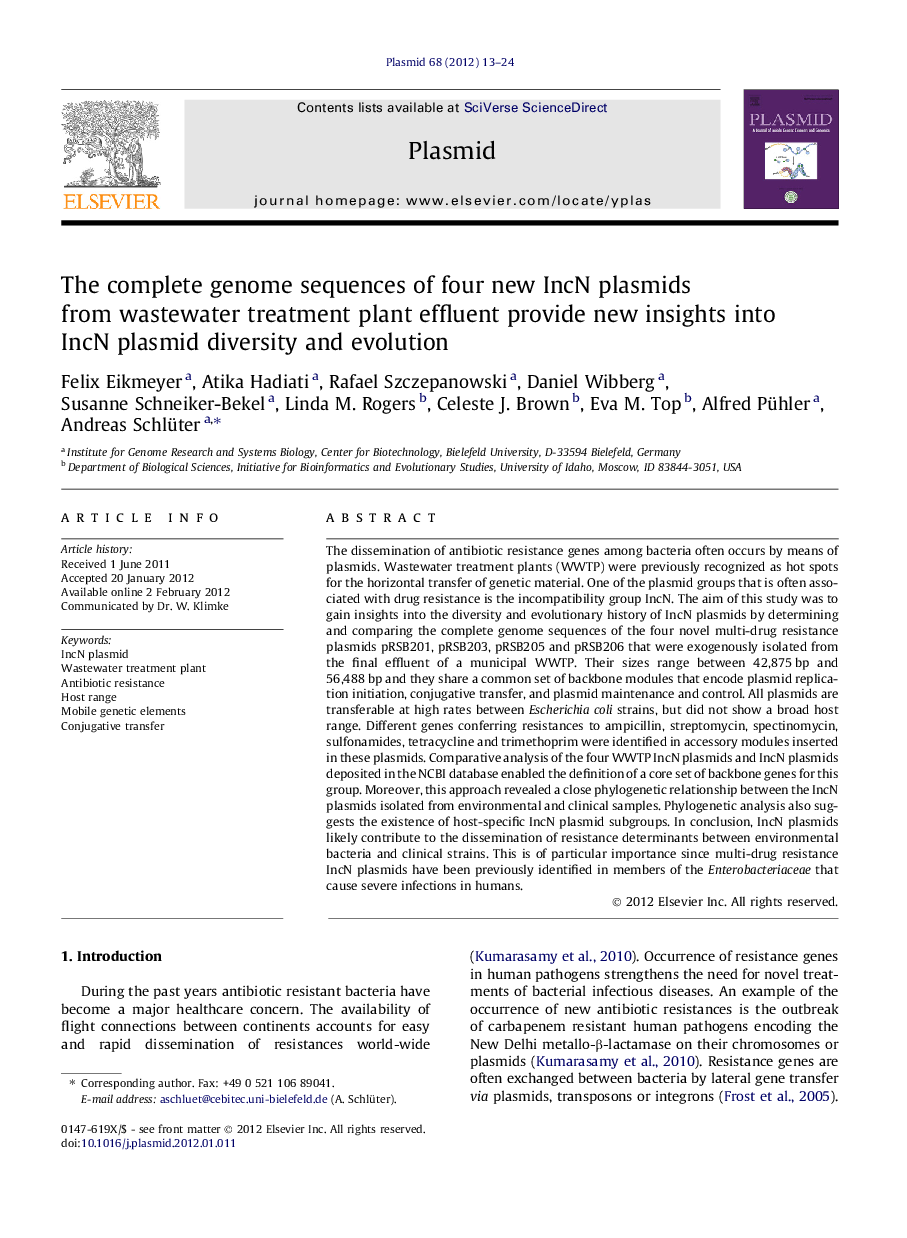| کد مقاله | کد نشریه | سال انتشار | مقاله انگلیسی | نسخه تمام متن |
|---|---|---|---|---|
| 2824247 | 1161635 | 2012 | 12 صفحه PDF | دانلود رایگان |

The dissemination of antibiotic resistance genes among bacteria often occurs by means of plasmids. Wastewater treatment plants (WWTP) were previously recognized as hot spots for the horizontal transfer of genetic material. One of the plasmid groups that is often associated with drug resistance is the incompatibility group IncN. The aim of this study was to gain insights into the diversity and evolutionary history of IncN plasmids by determining and comparing the complete genome sequences of the four novel multi-drug resistance plasmids pRSB201, pRSB203, pRSB205 and pRSB206 that were exogenously isolated from the final effluent of a municipal WWTP. Their sizes range between 42,875 bp and 56,488 bp and they share a common set of backbone modules that encode plasmid replication initiation, conjugative transfer, and plasmid maintenance and control. All plasmids are transferable at high rates between Escherichia coli strains, but did not show a broad host range. Different genes conferring resistances to ampicillin, streptomycin, spectinomycin, sulfonamides, tetracycline and trimethoprim were identified in accessory modules inserted in these plasmids. Comparative analysis of the four WWTP IncN plasmids and IncN plasmids deposited in the NCBI database enabled the definition of a core set of backbone genes for this group. Moreover, this approach revealed a close phylogenetic relationship between the IncN plasmids isolated from environmental and clinical samples. Phylogenetic analysis also suggests the existence of host-specific IncN plasmid subgroups. In conclusion, IncN plasmids likely contribute to the dissemination of resistance determinants between environmental bacteria and clinical strains. This is of particular importance since multi-drug resistance IncN plasmids have been previously identified in members of the Enterobacteriaceae that cause severe infections in humans.
► Complete sequences of four IncN plasmids from wastewater treatment plant effluent.
► IncN plasmids do not show a broad host range.
► IncN plasmids are involved in dissemination of antibiotic resistances worldwide.
► IncN plasmids share a common set of backbone modules.
► Host specific IncN plasmid subgroups were identified.
Journal: Plasmid - Volume 68, Issue 1, July 2012, Pages 13–24